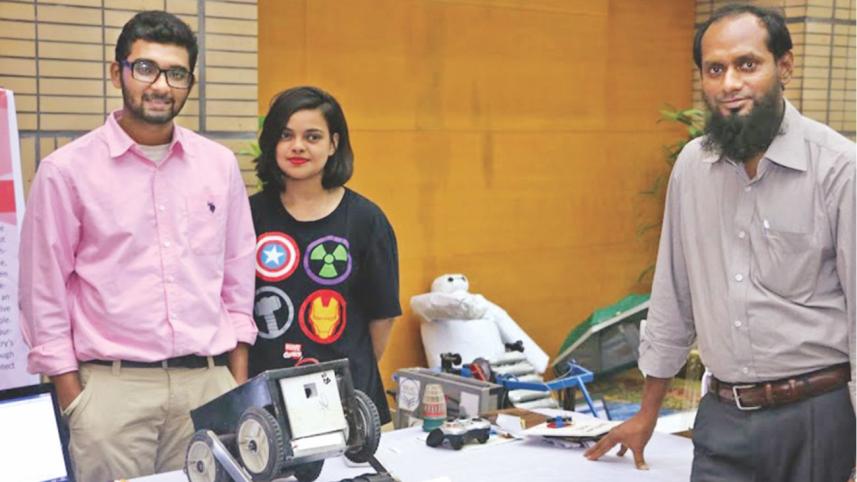RESCUEBOT: THE FIRST STEP

Tragedies often leave a lasting effect on every survivor's mind. Sometimes, they become the reason to strive for the better and make a difference. Three students of BRAC University's Electrical Engineering department decided to base their thesis project on their dream to make an impact. Mehbas Fairooz Nawal, Mohammad Shadman Sakib and Tahmid Rashid have come up with the prototype of Bangladesh's first ever, very own Rescuebot, designed to locate people trapped under rubble so that help can be sent to the exact sites.
“Our project supervisor and the CSE Department's assistant professor, Mohammad Khalilur Rahman's inspiration lead us this far,” says Mehbas Fairooz. Khalilur Rahman has been thinking of forming a rescue team with the students of BRAC University for a while, ever since the Rana Plaza tragedy took place. The thought was reignited when recently the Nepal earthquake spread all the way to our lands. “So many times people who have gone in to save lives have lost their own,” she continues, “our aim is to stop that from happening and to make saving lives easier.”

“Many other countries like Japan have their own rescuebots. Our one's main purpose is to find the exact locations of the people trapped underneath. It is designed to dig its way in,” says Shadman Sakib. The bot's revolving arms help it through the rubble, while the on-board camera does the locating. “We are trying to make improvements to the prototype like designing a booster for the camera for better images. We were initially worried about finding signals in the wreckage, but then we set up an on-board beacon. There are still some adjustments to make, and hopefully once we can get the funds we can complete and implement them,” Sakib continues. The bot also features an on-board adjacent torch, CO2 sensors and a thermal camera, and is controlled by a joystick via radio frequency.
“We really just want to find a way to save more lives, faster. In a disaster-prone country like ours, we really ought to think about the best possible solutions. Sometimes it takes weeks and more lives, just trying to save a few,” says Mehbas. Once the bot is tried and tested they plan to go into mass production, if successful, Sakib shares. He continues, “Khalilur Rahman sir inspired us to contribute to and make a difference in the society. This is just our first step.”




 For all latest news, follow The Daily Star's Google News channel.
For all latest news, follow The Daily Star's Google News channel.
Comments